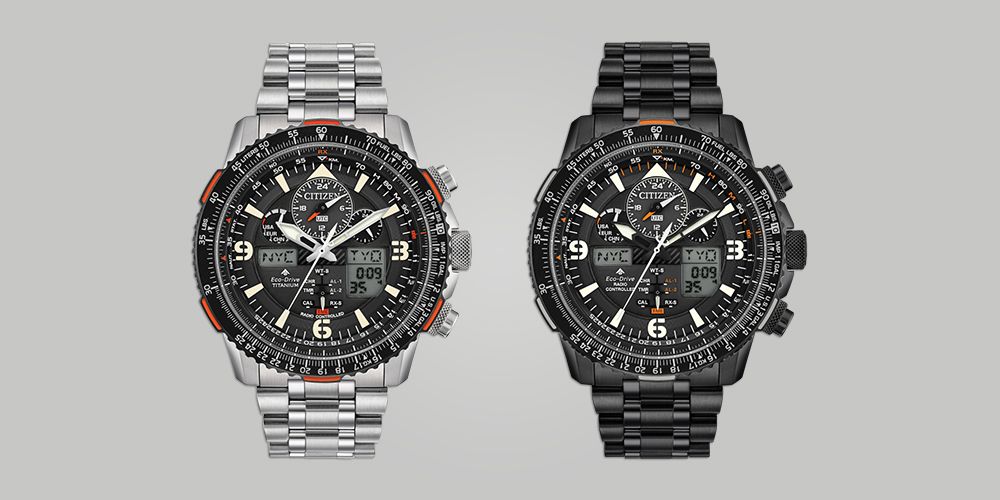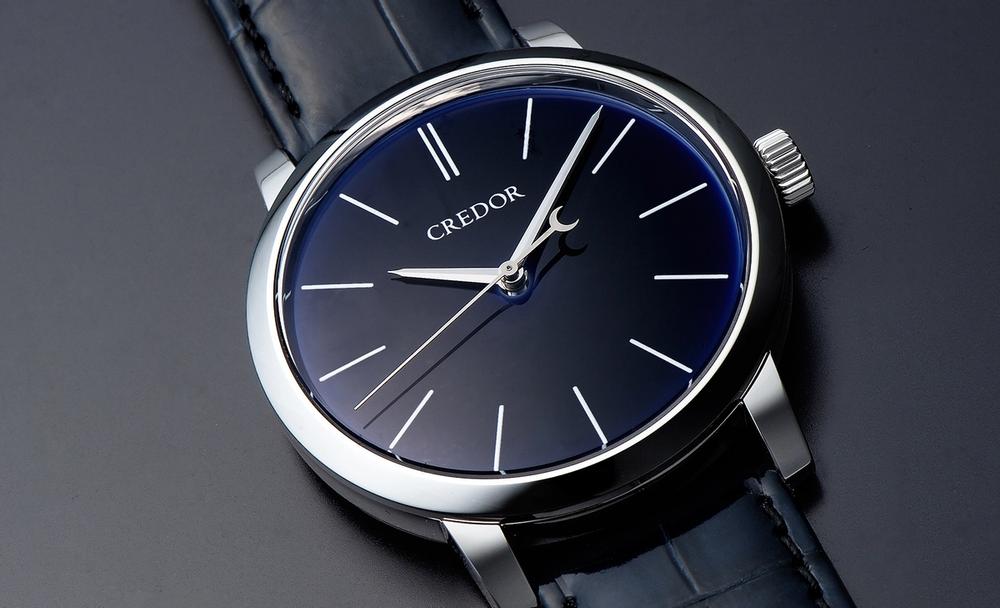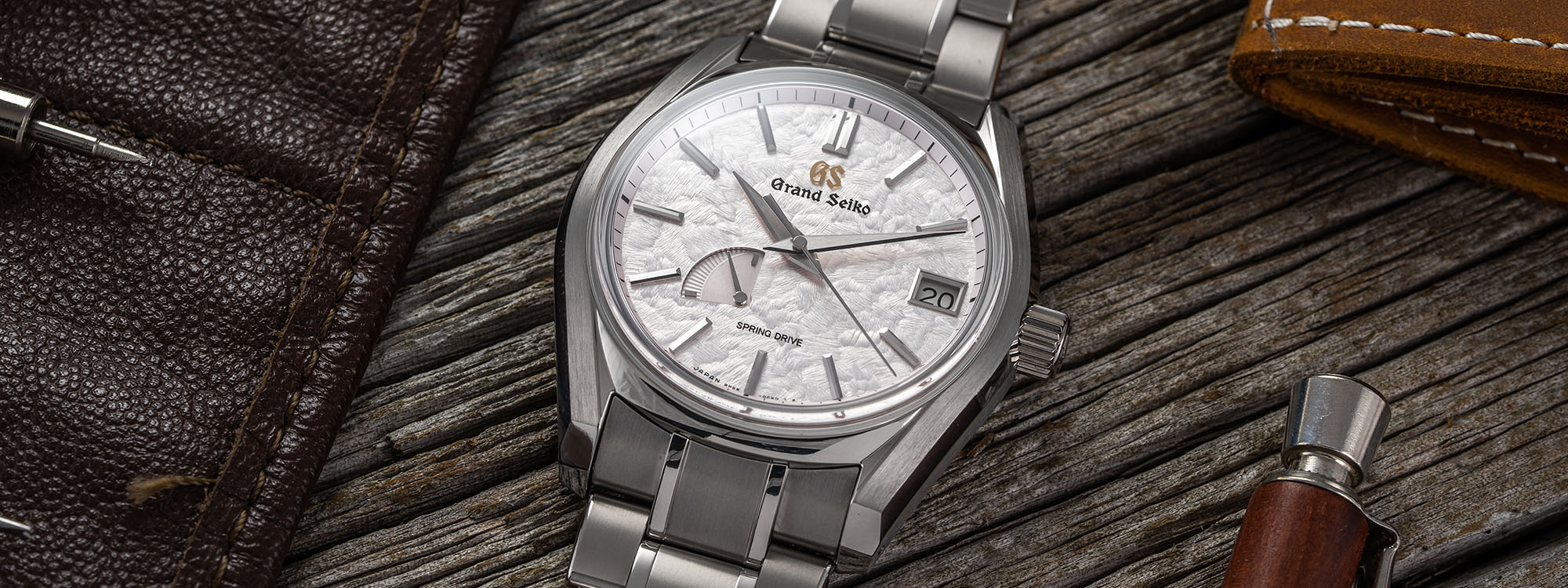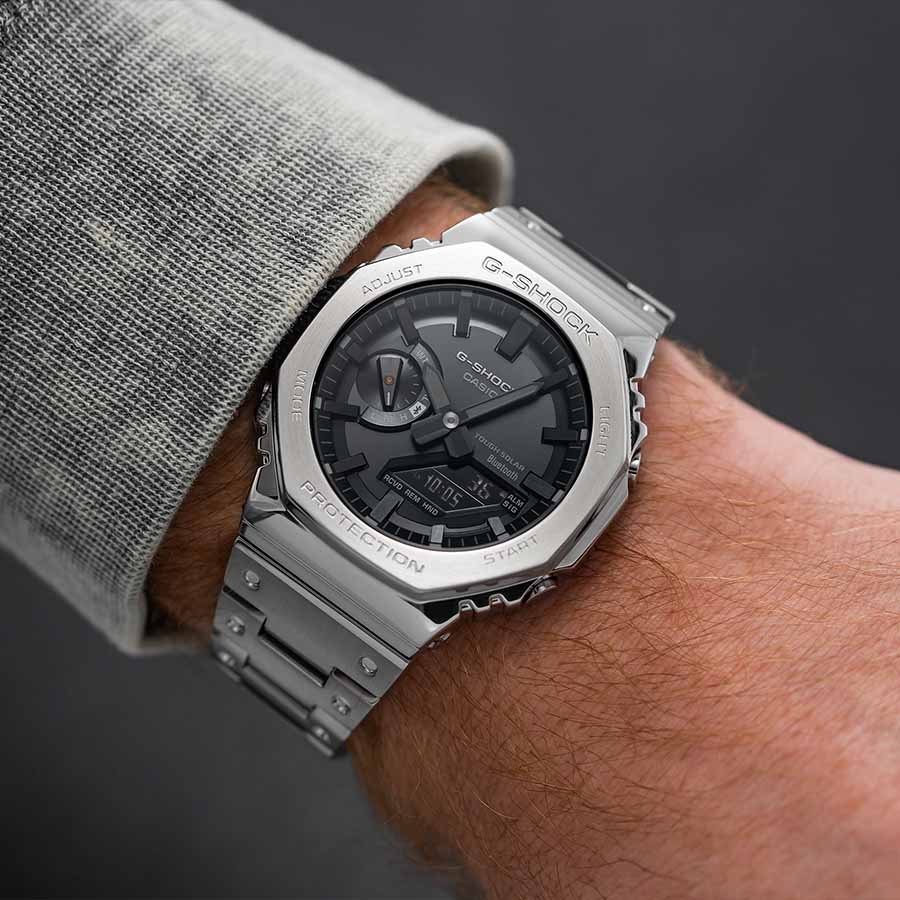Before we get into the best Japanese watch brands for 2025, let's discuss Japan's role in watchmaking. Outside of Switzerland, Japan is probably the best-known watchmaking country, producing some of the world’s best watches in every category and at nearly every price point. When most people think about Japanese watches, their thoughts still likely envision mostly inexpensive and mostly quartz-powered watches from well-known, mass-market brands like Casio, Seiko, and Citizen. and to be sure, Japan is rightly regarded as a value leader in the global watch market, led by inexpensive but wildly popular and collectible watches like Casio's G-Shocks and Seiko's classically styled, automatic diver’s watches like the SKX series. However, Japan is also an excellent source for watches in the mid-level, luxury, and high-watchmaking categories, from both the country's handful of major players as well as from exciting, younger independent brands.
In this article, we'll take a look at some of the best Japanese watch brands in 2025; we'll of course cover the big ones you need to know as well as a few smaller brands that should be on your radar, all to provide a general overview of the Japanese watch industry. To keep things interesting, we'll list a couple notable watches from each brand and occasionally a recent notable release. For more Japanese watches, be sure to check out our compilation of The Best Seiko Watches, as well as The 40 Best Automatic Watches Under $500, which is also chockful of watches from Japan.

Casio
It's one of the best Japanese watch brands for just about every demographic, and there’s a good chance your first watch was a Casio. Casio was founded in 1946 by Tadao Kashio, whose first major product was a yubiwa pipe (go look it up, you’ll be pleasantly surprised). In the Fifties, Kashio would go on to make electro-mechanical calculators. It wasn’t until the Seventies, however, that Casio made its first watch. It was called the Casiotron, which, unsurprisingly, was a quartz watch. From then on, Casio took off and started introducing more varied models with all sorts of different functions. These watches were accurate, tough, fun, and affordable. It’s little wonder then that Casio watches were and are the first watch for so many people.
Today, Casio is probably most prominently represented by the G-Shock collection. Introduced in 1983, G-Shocks have grown to become cultural and horological icons. And in the past decade, Casio started to introduce more upmarket and advanced G-Shocks featuring stainless steel construction, carbon fiber cases, advanced sensors like GPS, and Bluetooth connectivity. The MR-G lineup of G-Shocks, in particular, also celebrates Japanese history by featuring watches decorated by traditional Japanese craftsmen using ancient techniques like the hammer finish derived from ancient samurai weaponry.
Our Favorite Casio Watches:

Casio G-Shock DW5600
Considered THE G-Shock by many enthusiasts, the 5600 family shares a lot of DNA with the original G-Shock, the DW5000C. For less than $50 in most cases, the 5600 has 200 meters of water resistance, incredible shock resistance, and a useful set of functions including a stopwatch.
Casio A168WA-1
As one of the least expensive real watches you can buy, the astonishing Casio A168WA-1 features an alarm function, a 1/100th of a second chronograph, and a surprisingly durable build, all for less than $25 in most models.
Recent Hits from Casio:

Casio G-Shock Frogman GWF-A1000
For the first time, Casio’s much-celebrated, ISO-rated G-Shock Frogman diver’s watch has been equipped with an analog-digital display that should help bridge the gap for some enthusiasts who don’t typically mess with digital.

Citizen
The Japanese watch industry is, in many ways, dominated by two forces: Citizen and Seiko. Before Citizen was known as Citizen, it was founded in 1918 as the Shokosha Watch Research Institute. It took the name Citizen after it was acquired by a group of Japanese and Swiss investors. In the Seventies, along with its competitors at Seiko, Citizen started the mass production of inexpensive but highly accurate quartz watches. In 1976, Citizen took quartz technology further with the creation of the world’s first solar-powered analog quartz watch. This eventually led to the development of Citizen's Eco-Drive technology, which now powers many of Citizen’s watches, and continues to make the brand's watches powerful value propositions.
Quartz technology continues to be one of the main pillars of the Citizen Watch Company. In 2019, the company brought out the Eco-Drive Caliber 0100, which Citizen claims is the most accurate watch ever made, with a quartz movement that is accurate to an astonishing +/-1 second per year. Citizen also produces movements for many other brands through its Miyota group. Movements like the 8215 and 9016 are as famous and ubiquitous as Switzerland's automatic stalwarts, the ETA-2824 and Sellita SW200, especially among microbrand enthusiasts. Finally, Citizen's parent group has also made some major acquisitions over the past decade or so as it expands in production and offerings. In 2007 it acquired Bulova, and in 2012 it bought Swiss high-complication movement specialist Manufacture La Joux-Perret and the Swiss high-horology brand it owns, Arnold & Son.
Our Favorite Citizen Watches:

Citizen Promaster Aqualand BN2039-59E
One of Citizen’s most historically significant watches is the Aqualand, an analog-digital diver’s watch released in 1985. The most recent incarnation of that design concept is the BN2039-59E, an Eco-Drive-powered, analog diver’s watch with an integrated depth gauge.

Citizen Promaster Skyhawk A-T JY8108-53E and JY8075-51E
In either color, the Promaster Skyhawk is excellent evidence of the care and tech that goes into Citizen’s watch designs. Outside of a device like a smartwatch, the Citizen Skyhawk A-T offers about as much data as you can ask for in a solar-rechargeable package with an unnecessary-but-awesome 200 meters of water resistance.
A Recent Hit from Citizen:

Citizen Super Titanium Armor
With a name that sounds like the title of an animé film, Citizen’s Super Titanium series is constructed from a new titanium alloy that’s five times harder than stainless steel and 40% lighter to boot. In addition, the uber-modern design with an integrated titanium bracelet is striking, a little bit crazy, and plenty fun.

Credor
Credor is one of the best-kept secrets of Japanese watchmaking and easily one of the best Japanese watch brands out there. Most people have never heard of Credor, much less know about the incredible watches that the brand produces totally in-house. Technically, Credor is part of Seiko, but you won’t find any Seiko branding on its watches. The brand was conceived in the Seventies to represent the pinnacle of Seiko’s know-how and craftsmanship. Today, many of Credor’s watches feature Seiko’s Spring Drive movements, but with technical enhancements and a higher level of hand finishing. To ensure they remain competitive with the Swiss and Germans, Credor has even consulted with revered independent watchmaker Philippe Dufour on finishing techniques.
The watch that has come to represent Credor is the Eichi. The first Eichi watch was released in 2008, and was later replaced by the Eichi II in 2015. The Eichi II is a deceptive watch. At first impression, it looks just like a simple three-hander. The dial, however, is beautifully executed in Japanese porcelain, and all of the markers are painted by hand. The handcraftsmanship doesn’t stop there: The Eichi case is polished by hand, the blued steel hands are made by hand, and the Spring Drive movement within is decorated by hand as well. This is Japanese watchmaking at its best, and a brand very much deserving of a higher profile.
Our Favorite Credor Watch:

Credor Eichi II
For many, the Credor Eichi II represents the pinnacle of high watchmaking prowess from the Seiko family of companies, with a Spring Drive movement as beautiful as the hand painted porcelain dial. This blue-dialed version is also Credor’s hottest release in recent years, unveiled in early 2020.

Grand Seiko
The first Grand Seiko was released in 1960 as Seiko’s statement that it could produce watches that were as good as, if not better than, any of the luxury offerings from Switzerland. The brand has undergone some big changes in recent years. Likely in an effort to influence customer perception, in 2017 Seiko established Grand Seiko its own independent brand, with a completely separate leadership, design, and production scheme. One result of this move is that Grand Seiko watches released after 2017 now only have the Grand Seiko logo at 12 o’clock; the Seiko logo is nowhere to be found.
The modern Grand Seiko is generally recognized for offering tremendous bang for the buck when it comes to craftsmanship. The cases feature the brand’s signature Zaratsu polish, which is achieved by pressing the case against a rotating tin plate. This is done by a skilled hand and requires years of experience to execute properly. The dial work is also widely regarded as some of the best at any price point, with wonderfully textured surfaces and indices and hands that are elegant and beautifully finished. Grand Seiko’s most iconic and well-known piece is the SBGA011, affectionately known to enthusiasts as the “Snowflake”, a watch that gets its name from its heavily textured white dial, which is said to have been inspired by snowy fields around the Grand Seiko manufacture in the Suwa region. Most recently, Grand Seiko introduced a new high-beat caliber called the 9SA5 that will power a new generation of watches. This movement features an entirely new escapement, balance, and gear train, and further demonstrates the incredible value packed into Grand Seiko watches.
Our Favorite Grand Seiko Watches:

Grand Seiko SBGA413
If you’ve never had the opportunity to handle a Grand Seiko, you’d have a hard time imagining how incredibly well finished Grand Seiko watches are, especially given their lower price point compared to other luxury brands. The SBGA413 has an incredible dial with a very light pink color and hand-executed texture combined with GS’s impressive Spring Drive caliber.

Grand Seiko SBGA229
For the sportier side of Grand Seiko, you can’t go wrong with the maker's mainstay diver’s watch, the SBGA229. With a Spring Drive caliber, a hearty helping of Grand Seiko’s industry-leading LumiBrite luminescent material, and an ISO 6425 rating, the SBGA229 is a luxury diver’s watch that rivals watches at twice the price.
A Recent Hit from Grand Seiko:

Grand Seiko SBGA427
Some time ago, we had the opportunity to spend some time with Grand Seiko’s SBGA427 and came away impressed with the highly legible, classically-styled package with a fun pop of color in the form of a green seconds hand and power reserve indicator hand. For a GS that is a little bit more funky compared to much of the collection, this is one to check out. It's one of the neatest offerings from a mainstream luxury icon that is likely the most well known of the high-end best Japanese watch brands.

Hajime Asaoka
Thanks in part to Japan’s cultural appreciation for craftsmanship, the country is home to several impressive if lesser known brands, including Hajime Asaoka, one of the most prominent Japanese independent watchmakers. Like so many others in his trade, Hajime Asaoka’s namesake founder is self-taught, having acquired much of his skills and knowledge by reading George Daniels’ seminal Watchmaking and watching YouTube videos, which of course we fully support.
Asaoka’s claim to fame is the time-only Tsunami watch, a classic-looking watch with a twist: it has a 16mm (which is huge) titanium balance. Since then, the watchmaker has added new models to his collection, including two tourbillons and a chronograph, all of them completely handmade by Asaoka. Most recently, Asaoka has released a new collection called Kurono that offers markedly more affordable watches. These watches aren’t made by Asaoka himself and feature third-party movements, but he designs them and oversees production to ensure that the pieces meet his high standards. After all, despite the considerably lower price, these Kurono watches still bear his name on the caseback, a name that is likely to be better known among watch aficionados before too long.
Our Favorite Hajime Asaoka Watches:

Hajime Asaoka Tsunami
As the brand’s most iconic model, the Tsunami has a "business in the front, party in the back" design thanks to the restrained, small-seconds sector dial and enchanting, handmade caliber viewed from through the caseback.
Hajime Asaoka “Chronograph”
Built around a stunning openworked caliber design, Asaoka’s aptly named “Chronograph” puts the brand’s incredible artisanal watchmaking front and center by eschewing the dial altogether. While not necessarily the most legible chronograph out there today, Hajima Asaoka’s new “Chronograph” is truly mesmerizing to behold and as beautifully finished as almost anything coming from Switzerland.

Orient
Orient is often said to be owned by Seiko, but the actual nature of the relationship is a little more complicated than that. Orient is a subsidiary of Seiko Epson Corporation, whose main business is printers and imaging-related equipment. In turn, Seiko Epson Corporation is one of the three main companies composing the Seiko Group. Seiko Watch Corporation, the company that actually makes Seiko watches, is part of Seiko Holdings Corporation, which, like the Seiko Epson Corporation, is another one of the three main companies of the Seiko Group, along with Seiko Instruments Inc. Confusing, to be sure, but suffice to say, Seiko and Orient are operated as totally separate entities, albeit with some upper- echelon business and financial ties.
Though the history of Orient can be traced further back, the company as we know it today was established in 1950. A highlight model from its history is the Fineness, which was launched in 1967 and was, at its time, the thinnest self-winding watch with a day-date complication. Now, the brand is a leader in affordable mechanical watches, and is often mentioned in the same breath as its compatriot Seiko. Orient’s most popular watch these days is arguably the Bambino — a classically styled dress watch that has seen many iterations over the years. Orient is also popular for its dive watches, especially the Kamasu, a hit amongst many dive watch lovers and one of the best value watches from one of the best Japanese watch brands.
Our Favorite Orient Watches

Orient Kamasu
The Kamasu is simply one of the best diver’s watches out there and certainly one of the best in the price range of $300. With a hacking and hand-winding caliber, a solid bracelet for the money, and a clean, distinctive dial design, the Kamasu is an aquatic "Seiko killer" at an affordable price.
Orient Neptune
While it isn’t brand new (released in 2018), the Orient Triton/Neptune is one of the watches that best embodies what Orient is all about once you jump up a bit from its most entry-level price points. For around $500, you get a JIS-rated (Japanese Industrial Standard) diver’s watch with a hacking, hand-winding, in-house caliber, great lume, and a surprisingly solid bracelet, all with a signature Orient design inspired by the brand’s legendary Saturation Diver model.
A Recent Hit from Orient:

Orient Bambino 75th Anniversary
The Bambino 75th Anniversary Limited Edition Ref. RA-AC0027S30B is a take on the Bambino Classic and is limited to a still-not-so-small 9,500 pieces. The classically designed white dial has pink-gold-colored indices, blue hands, and that vintage Orient logo while the exhibition caseback has “Orient Since 1950 75th Anniversary” embossed on the sapphire crystal, beneath which beats the Caliber F6B24 with 40-hour power reserve. The watch comes on an interchangeable calf leather strap, as well. The case measures 40.5mm wide and 12.3mm thick with a lug-to-lug measurement of 46.5mm (30 meters of water resistance).

Minase
Though Minase is a relatively new player in the industry, established in 2005, its parent company, Kyowa and Co., has been in the manufacturing business for much longer. Kyowa and Co., a company associated with precision machining and engineering, was founded in 1963. Given its precision machining capabilities, one of its specialties is watch cases and bracelets. Eventually, the company decided to dip its toes in the water and make its own complete watches as well, and Minase was born.
Given that its specialty is cases, it’s no surprise to see that many of Minase’s models have unusual and distinctive case designs which stand apart for their high levels of finishing. The brand’s eye-catching Five Windows model, for example, is so named because its case features five pieces of sapphire crystal in its construction, to give owners a peek into its inner workings. The Divido is another Minase watch that is worthy of attention: no less than former Japanese Prime Minister Shinzo Abe was once spotted wearing one. The Divido is much more conventional-looking, but its highly angular case and highly detailed dial, once again, shows off the intense amount of metalwork that goes into a Minase watch.
Our Favorite Minase Watch:

Minase Five Windows
With a case featuring five sapphire-filled architectural cutouts to allow for easy viewing of the beautiful dial and movement surfaces, Minase is a leader in high-end case construction. The Five Windows is the brand’s signature design and a watch you’ll immediately recognize — assuming you’re aware of its existence, which you should be. With its distinct design language and unique aesthetics, Minase is one of the best Japanese watch brands for those who really seek something out of the ordinary.

Seiko
At this point, Seiko is synonymous with Japanese watchmaking. The company was founded in 1881 by Kintaro Hattori and got its start by selling and repairing watches and clocks. Just 11 years later, Hattori started producing clocks and then pocket watches, followed closely by the company’s, and Japan’s, first wristwatch in 1913. The 1960s was a period of rapid growth for the company. Not only did Seiko introduce the first Grand Seiko watch and also Japan’s first dive watch, but the firm also gained international recognition by performing above expectations when compared to Swiss brands at the Neuchâtel Observatory Competition. And in 1969, not only was Seiko one of the first to introduce a self-winding chronograph watch, it also launched the world’s first quartz watch, the Astron. As you know, quartz watches ended up being a little bit of a thing.
One of the best Japanese watch brands in modern history, Seiko is recognized as one of the few truly vertically integrated manufacturers in watchmaking, producing all the components in its watches, including the cases, dials, crystals, and all movement components including the mainspring and balance spring. For its quartz watches, Seiko even grows its own quartz crystals. Because of its amazing watch manufacturing capability, it makes watches that span a wide range of price points, with an emphasis on the entry- to midlevel. Though it is arguably most famous today for its affordable dive watches, one of the brand’s biggest achievements is its Spring Drive movement, which we cover in detail elsewhere. Spring Drive is a hybrid electro-mechanical movement that consists of a mechanical gear train and an electronic regulator. It is distinctive for its smooth gliding seconds hand, and its outstanding accuracy of +1/-1 second per day. It is clearly one of the most impressive and interesting watch calibers in existence today, and straight out of Japan.
Our Favorite Seiko Watches:

Seiko SARB037 - (Discontinued)
Sure, they’re discontinued now and were only ever available in Japan to begin with, but the SARB037 is easily one of my favorite Seiko watches thanks to its stunning salmon-colored dial. Add to that the much-lauded features which have made the SARB series the industry icon that it is, and you have a really special yet hard-to-find Seiko. If you run across one, buy it.

Seiko Recraft Series
The Seiko Recraft series is a line of vintage-inspired pieces that are unlike the more expected offerings from the likes of the Prospex or Presage families. There is just something funky and playful about the SNKP23 with that rectangular case and gradient blue dial. It's something unexpected and genuinely joyful from a brand with a long list of iconic staples.
 Kikuchi Nakagawa
Kikuchi Nakagawa
Founded by watchmaker Tomonari Nakagawa and designer Yusuke Kikuchi in 2018, this small batch Japanese indie is driven by an obsessive attention to detail (not to mention a notorious near-decade long waiting list). The philosophy of the brand is expectedly mercurial considering the artistic nature of the founders who use two “contradictory ideals” to govern Kikuchi Nakagawa. These ideals are “Extracting the abstract aspect from the metal and pursuing the art of metal beyond the characteristics of its functionality” and “Making an authentic watch as a tool that has the function to indicate time as an extension of the 1930s–1950s, the golden age of mechanical wristwatches.” In short, the brand wants to be avant-garde in its methods and execution while staying traditional and functional in its design.
Our Favorite Kikuchi Nakagawa Watch

Murakumo
The first Kikuchi Nakagawa watch is the Murakumo, a traditionally designed dress watch inspired by the classic Patek Philippe Ref. 96. The 36.8mm wide and 8.5mm thick steel watch is about as staid as it gets, while those stylized Arabic numerals and hands add a ton of personality and high finishing level. The hands are beautiful, particularly the dramatic, spade-shaped hour hand. The dial is done by Kari Voutilainen’s workshop Comblémine while the KN001 movement is provided by Vaucher. The Kikuchi Nakagawa Murakumo is priced at $21,000 but, again, the brand is not even accepting orders at the moment due to demand creating a decade-long waiting list for this fresh entry to the best Japanese watch brands of 2025.

Naoya Hida & Co.
Perhaps no independent Japanese watchmaker has gotten as much acclaim in recent years as Naoya Hida, whose eponymous brand has captured the attention of collectors worldwide. These seemingly demure watches are characterized by the absolutely beautiful dials with hand-engraved numerals done by craftsman Keisuke Kano, each of which can take between one to five full days of work to complete. Much like Kikuchi Nakagawa's offerings, these watches are inspired by vintage Swiss design but have a Japanese flair centered around a distinctly unique aesthetic.
You might have guessed that this is another brand which has far more demand than supply, which is capped at around 100 pieces per year. Allocations are done through an application system that works more like a lottery, which is bound to please some and frustrate many more. Prices for the simple time-only NH Type 1D start at about $20,000 and go all the way up to about $58,000 for the NH Type 6A, which is a perpetual calendar.
Our Favorite Naoya Hida & Co. Watch

Naoya Hida Type 3A Moon
This was Naoya Hida’s third watch when it was released in 2021 but it still stands as one of the most charming executions of a moon-phase in recent years. With a 37mm wide and 10.7mm thick steel case, the Type 3A is all about the dial, with a focus on that big moon-phase indicator, whose 18k gold disk contrasts wonderfully against the German silver dial. Detractors will note the closed caseback that has the Caliber 3020LU — which is a heavily modified Valjoux 7751 — housed within it. Clearly the brand is about dial and case finishing but the movement is something to consider when weighing the ~$21,000 price tag compared to some alternatives.

Masahiro Kikuno
Masahiro Kikuno is a small independent Japanese watchmaker but could not be more different from the likes of Naoya Hida or Kikuchi Nakagawa. Rather than finding inspiration from classic vintage Swiss watches, Kikuno is preoccupied with more elaborate timepieces that offer a cerebral and highly artistic spin on Japanese history. Kikuno is based out of a small workshop in Matsudo where he personally manufactures just about every part of the one or two watches he produces annually (other than mainsprings, hairsprings, jewels, and sapphire crystals). A member of the AHCI since 2013, Kikuno produced just 20 watches between 2012 and 2024 with no plans to ramp up production of these avant-garde pieces priced between ~$31,000 and $120,000.
Our Favorite Masahiro Kikuno Watch

Masahiro Kikuno Wadokei
Kikuno debuted at Baselworld 2011 with the Wadokei or Temporal Hour watch which has a mechanism that takes length of day into account by dividing the number of hours between sunrise and sunset by 6. This determines a “counting unit” which is readjusted every season in order to take the change in daylight hours into account. This makes the space between the indices dynamic, with longer spaces during daytime and shorter during the nighttime during the summer solstice, and vice versa during the winter solstice. It’s a remarkable piece of watchmaking that demonstrates the technical prowess and truly unique style of Masahiro Kikuno, cementing his name as one of the best Japanese watch brands out there.
























































3 Comments
I recently purchased a GNW Quartz watch. On the lower face it reads "Japan | Mov t. i cannot find a single reference to that brand anywhere. Can someone tell me where it can be evaluated.
Hello, maybe a useful information to this article, Minase 5 Windows in stainless steel costs CHF 4700 on steel bracelet and CHF 3500 on leather band. The gold model are available on demand.
I would say another great Japanese brand would be Knot. I recently bought their ATC-40 and I absolutely love it! Also, Citizen’s NB1060 watches are beautiful as well!